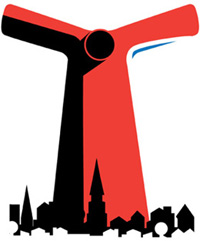Heed cruise critics’ concerns

The South Carolina State Ports Authority is still intent upon building a new cruise ship terminal at the north end of Union Pier with a loading dock, parking and rain canopies.
And opponents are still alarmed by the impact that would have on air quality, traffic and the city’s Historic District, which is a National Historic Landmark.
But at least a new set of ears is now considering the debate: The Army Corps of Engineers, heard from about 30 people at a hearing Tuesday on the SPA plan. All but two spoke against the terminal. And a majority of the 115 in attendance appeared to side with them.
This is actually the second time the SPA has asked the Corps for permission to build the terminal. In 2012, the Corps agreed to a permit, but a federal judge reversed the decision because the Corps did not adequately consider environmental and historic preservation issues related to the project.
For example, the state and local medical societies have formally opposed the cruise plans because of hazardous emissions from ships idling at dock.
Steve Dopp, who owns the Francis Marion Hotel, said he can see the black soot wafting from cruise ships from his office on King Street.
The SPA has no plan to install shoreside power to fuel those ships as some other ports have done out of concern for people’s health.
Further, the SPA has refused a binding agreement to limit the number and size of cruise ships that visit here.
Jim Newsome, SPA president and CEO, has said he will alert the city of Charleston if the SPA ever decides to surpass 104 cruise ship visits per year carrying no more than 3,500 passengers per ship, but that promise is not in writing.
The reason people want formal limits on the size and frequency of cruise ships is that thousands of passengers spill out of ships onto busy downtown streets. They say the very fabric of the Historic District, which is crowded even without cruise ships, is jeopardized by the visitors and would be even more so if the SPA were to increase cruise ships business at a new, larger terminal.
The Southern Environmental Law Center would like the SPA to consider alternative sites for the terminal, but Mr. Newsome has said the Union Pier option is the only possibility.
So the next step will be up to the Corps of Engineers, whose project manager, Nat Ball, said the question will be whether the project would cause problems that don’t already exist with the SPA’s existing cruise ship operations.
Mr. Ball said issues like the size and frequency of cruise ships doing business here is not in the Corps’ purview.
But formalizing those limits is something that the SPA could do very easily.
Adding shore power for cruise ships would cost additional money, but it would be a sign that the SPA wants to be a good neighbor — and it might hasten the expensive approval process.
Charleston Mayor John Tecklenburg won election last November with both shore power and formal cruise limits among key items on his platform.
The gulf between the opponents and proponents in this matter isn’t that wide. But it must be bridged to protect people’s health.
And that should happen before Charleston’s Historic District is damaged beyond repair.
